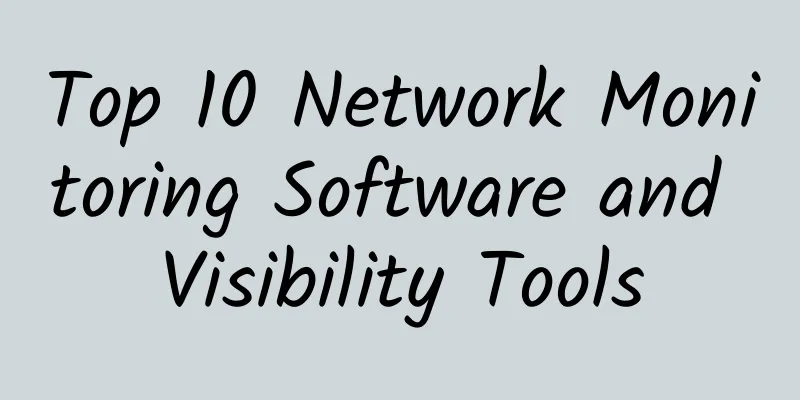When to use 5G and Wi-Fi 6?

|
We’ve seen a lot of hype around 5G cellular and Wi-Fi 6. But the reality is that the two are largely complementary, with some overlap in use cases that will create an interesting competitive environment in the early 2020s.
The potential of 5G in the enterprise The promise of 5G for enterprise users is faster connection speeds and lower latency. Cellular technology uses licensed spectrum, which largely eliminates the potential interference that can occur with unlicensed Wi-Fi spectrum. Like current 4G LTE technology, 5G can be provided by cellular wireless carriers or built as a private network. 5G's architecture requires more wireless access points and may be affected by poor or no connectivity indoors. Therefore, enterprises need to evaluate their current 4G and potential 5G services for PCs, routers and other devices. Deploying indoor microcells, repeaters and distributed antennas can help solve indoor 5G service issues. As with 4G, the best use case for enterprise 5G is true mobile connectivity, such as public safety vehicles, in environments such as mining, oil and gas extraction, transportation, agriculture and some manufacturing industries. In addition to widespread mobility, 5G offers advantages in authentication, roaming and deployment speed, which may be needed to provide wide area network connectivity for pop-up offices or retail sites. 5G will have the ability to offload traffic in congested situations such as real-time video. As 5G standards mature, the technology will improve its options for low-power IoT connections. 5G will be gradually rolled out in large cities and specific areas over the next four to five years; 4G technology will continue to be popular for several more years. Enterprise users will need new devices, dongles and routers to connect to 5G services. For example, Apple iPhones are not expected to support 5G until 2020, and IoT devices will require specific phone compatibility to connect to 5G. Doyle Research expects that 5G's promise of 1Gbps and higher bandwidth will have a significant impact on the SD-WAN market. 4G LTE has already enabled mobile services to become the primary WAN link. 5G will likely be cost-competitive or cheaper than many wired WAN options such as MPLS or the Internet. 5G gives enterprise WAN managers more options to provide more bandwidth to their branch sites and remote users - potentially replacing MPLS over time. Wi-Fi 6’s potential in the enterprise Wi-Fi is nearly ubiquitous, connecting laptops, tablets, and other devices to corporate networks. Wi-Fi 6 (802.11ax) is the latest version of Wi-Fi, offering faster speeds, lower latency, higher bandwidth, and advanced traffic management. While it shares some similarities with 5G (both are based on orthogonal frequency-division multiple access), Wi-Fi 6 is less susceptible to interference, consumes less power (which extends device battery life), and has improved spectral efficiency. As is typical with Wi-Fi, many vendors currently offer Wi-Fi 6 products. The Wi-Fi Alliance plans to certify the Wi-Fi 6 standard in 2020. Most enterprises will upgrade to Wi-Fi 6 within the standard access point lifecycle of three years or so, unless they have specific performance/latency requirements that allow for faster upgrades. Wi-Fi access points continue to be subject to interference, and designing and site APs to provide adequate coverage can be a challenge. Enterprise LAN managers will continue to need vendor-provided tools and partners to configure optimal Wi-Fi coverage for their enterprises. Wi-Fi 6 solutions must integrate with wired campus infrastructure. Wi-Fi vendors need to better provide enterprises with unified network management across wireless and wired solutions. Requires wired backhaul For both technologies, wireless technology is combined with a wired network infrastructure to provide end-to-end high-speed communications. In the enterprise, Wi-Fi is often paired with wired Ethernet switches on campus and in larger branches. Some devices connect to the switch via cables, others connect via Wi-Fi—a laptop might use both methods. Wi-Fi access points connect via Ethernet within the enterprise and connect to the WAN or the Internet via fiber. The architecture of 5G makes extensive use of optical fiber to connect distributed wireless access networks back to the core of the 5G network. Optical fiber is often required to provide the high bandwidth required to connect 5G endpoints to SaaS-based applications and provide real-time video and high-speed Internet access. Private 5G networks must also meet the requirements of high-speed wired connections. Switching Problems As phones switch between 5G and Wi-Fi 6, enterprise IT managers need to focus on switching challenges. These issues can impact performance and user satisfaction. Some organizations are working to develop standards to facilitate better interoperability between Wi-Fi 6 and 5G. Because the architecture of Wi-Fi 6 is consistent with 5G, the experience of moving between cellular and Wi-Fi networks should become more seamless. 5G vs. Wi-Fi 6 depends on location, application, and device Wi-Fi 6 and 5G compete with each other in specific situations in enterprise environments, depending on location, application and device type. IT managers should carefully evaluate their current and emerging connectivity needs. Wi-Fi will continue to dominate indoor environments, and cellular networks will win in broad outdoor coverage. Some overlap cases occur in stadiums, hotels, and other large event venues, where many users compete for bandwidth. Government applications, including aspects of smart cities, can be suitable for both Wi-Fi and cellular networks. Health care facilities have many distributed medical devices and users that need to be connected. Large distributed manufacturing environments have similar characteristics. Emerging IoT deployments may be the most interesting "competitive" environment. Some suggestions for IT experts While the wireless technologies that enable them to converge are evolving, Wi-Fi 6 and 5G are fundamentally different network technologies. Both play their respective roles in enterprise connectivity. Enterprise IT leaders should focus on how Wi-Fi and cellular networks complement each other, with Wi-Fi continuing to be the built-in technology for connecting PCs and laptops, tablet data, and some IoT connections. 4G LTE to 5G will remain the true mobile technology for phone and tablet connections, an option for PC connections (via dongles), and increasingly popular for connecting some IoT devices. 5G WAN links will increasingly become the standard, as a backup to improve SD-WAN reliability, and as the primary link for remote offices. |
<<: In addition to speed, 5G can also change these aspects of your life!
Recommend
What is Open RAN?
Open RAN is an industry standard designed to powe...
Working together: Two ways Wi-Fi and 5G can coexist
WBA: Wi-Fi and 5G coexist at the physical layer o...
An article explains what NVMe is
With the emergence of NVMe, the performance of ha...
After the mixed-ownership reform, can China Unicom seize the opportunity to make a comeback in 5G?
Image source: Visual China Among China's thre...
Juniper Networks helps you achieve win-win in the era of enterprise multi-cloud
[Original article from 51CTO.com] Cloud computing...
Health and Risk: A New Model for Data Center Capacity Management
Some analysis companies believe that capacity man...
Outstanding Network Virtualization Solutions in 2021
Hardware maintenance has always been a major prob...
Wi-Fi 5 is out! Wi-Fi 6 advantages: faster speed/more power efficient
If 2019 is the first year of Wi-Fi 6 commercializ...
5G technology revolutionizes many industries!
The transformative power of 5G is at the forefron...
ZTE Chief Scientist Talks About the Current Status of 5G
[51CTO.com original article] The Internet of Thin...
Cross-industry cooperation becomes normalized, and China Telecom's business halls demonstrate their landmark attributes
In the era of mobile Internet, various new econom...
80VPS: Cluster server starting from 900 yuan/month, 8C segment US/Hong Kong multiple data centers, optional CN2 line
80VPS is a long-established Chinese hosting compa...
Kuaishou builds a real-time data warehouse scenario-based practice based on Flink
This article is compiled from the topic "Kua...
Performance improvements of Http/2 compared to Http/1.1
What has changed since HTTP/1.1 was invented? HTT...
Metaverse: What are the four pillars?
As a new paradigm of industrial Internet, the Met...









